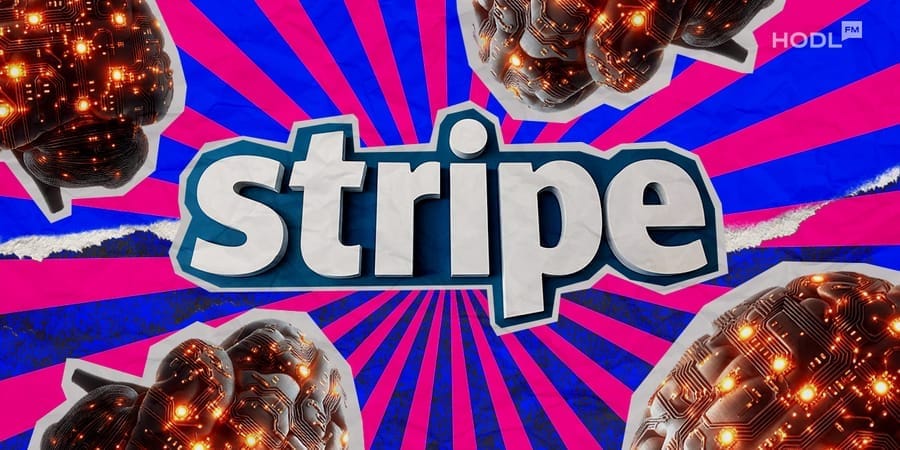Stripe’s rising blockchain initiative, Tempo, has rapidly captured global attention after securing $500 million in a Series A funding round. The significant raise, which reportedly values the project at $5 billion, was accompanied by another major announcement: the high-profile recruitment of Dankrad Feist, one of Ethereum’s leading core developers.
Tempo’s Series A funding
According to Fortune, the Series A was co-led by prominent venture capital firms Greenoaks and Thrive Capital, with additional participation from Sequoia Capital, Ribbit Capital, and SV Angel. Notably, neither Stripe nor its crypto venture partner Paradigm contributed fresh capital in this round.
The round highlights growing investor confidence in the potential of blockchains optimized for large-scale payments. Tempo, co-founded by Stripe and Paradigm, has been under development for less than two months and is already one of the most highly valued blockchain start-ups ever at this stage.
Sources cited by Fortune described the deal as a "bet" on the emergence of dollar-backed stablecoins as a key infrastructure layer for the global financial system. The new funding positions Tempo among the top contenders to reshape digital payments through blockchain technology.
Building a layer-1 payments blockchain
Tempo is a layer-1 (L1) blockchain, meaning it operates independently rather than being built on top of another protocol. It is designed to serve as a payments-focused network optimized for stablecoin transactions, real-world settlement, and financial-scale throughput.
The project is being guided by a roster of major design and integration partners, including OpenAI, Anthropic, Visa, Revolut, and Standard Chartered. These collaborations aim to align Tempo’s design with enterprise-grade use cases across AI, fintech, and e-commerce.
Patrick Collison, CEO of Stripe, described Tempo on X as “the payments-oriented L1, optimized for high-scale, real-world financial applications.” He explained that as stablecoin use expands across Stripe and its acquisitions, including Bridge and Privy, there is a clear need for a blockchain built for speed, security, and financial application integration.
Introducing @Tempo.
— Patrick Collison (@patrickc) September 4, 2025
At Stripe, we care about high-throughput, low-latency payments use cases. As the use of stablecoins (and crypto more broadly) grows across Stripe, Bridge, and Privy, we found that existing blockchains are not optimized for them.
For example, it's valuable…
Ethereum developer Dankrad Feist joins Tempo
In a move that surprised Ethereum’s open-source community, Dankrad Feist, one of the Ethereum Foundation’s most prominent core researchers, confirmed he is joining Tempo’s core team.
I am excited to announce that I will be joining Tempo. This last year has been a turning point for crypto, where we have finally seen the outlines of our vision being materialized. While payments used to be front and center in the early days of crypto, I see a special opportunity…
— Dankrad Feist (@dankrad) October 17, 2025
Feist stated that while he will take on a full-time role at Tempo, he intends to remain an advisor to several of Ethereum’s research initiatives:
“Over the last year, I have been involved in advancing Ethereum Foundation’s strategy and roadmap and I will remain a research advisor to the three strategic initiatives (Scale L1, Scale Blobs, Improve UX) at the Protocol Cluster at the EF.”
Feist said his decision stems from a desire to bring blockchain payments to a global audience more effectively. He was among the researchers who helped shape Danksharding, one of Ethereum’s cornerstone scaling upgrades.
Ethereum co-founder Vitalik Buterin publicly wished Feist success, praising his “incredibly valuable contributions” to Ethereum’s progress. However, not all community members shared the same sentiment.
Dankrad has been an excellent researcher and has made immensely valuable contributions to the Ethereum that we know and love today, including Danksharding, consensus research and much more. Wishing him luck in his new efforts. https://t.co/dlSwu3fpen
— vitalik.eth (@VitalikButerin) October 17, 2025
Ethereum supporters expressed concern over what they saw as a shift from open-source collaboration to corporate-backed blockchain development. Influencers and podcasters debated whether Feist’s move signals growing competition between public blockchains and private financial infrastructure players like Stripe.
Tempo’s growing strategic vision
For Stripe, future-proofing its infrastructure around blockchain technology has been a clear objective. The fintech giant, valued at over $90 billion, processed $1.4 trillion in payments volume in 2024. The company has steadily reintroduced crypto services after a years-long pause, including the acquisition of the Bridge stablecoin platform for $1.1 billion and wallet provider Privy earlier this year.
Led by Paradigm co-founder Matt Huang, Tempo will operate with its own independent team, separate from both Stripe and Paradigm. According to Paradigm’s CTO Georgios Konstantopoulos, Tempo also welcomes the Ithaca team, known for building open-source crypto solutions, to strengthen its development efforts.
Excited to share that the @ithacaxyz odyssey continues at @tempo!
— Georgios Konstantopoulos (@gakonst) October 17, 2025
We will accelerate Tempo’s mission towards real-world crypto adoption while further stress-testing and optimizing our existing open source stack for the entire crypto ecosystem.
Thank you for the trust, onwards. pic.twitter.com/48UKvH80Yd
Competition heats up in the stablecoin arena
Tempo’s focus on payment infrastructure places it in direct competition with established stablecoin players like Circle, issuer of USDC, which currently has a market capitalization of over $75 billion. Circle has also announced plans to launch its own layer-1 blockchain later this year, targeting enterprise-grade payment infrastructure.
The broader stablecoin market has been buoyed by recent legislative developments such as the GENIUS Act in the United States, which provides clearer federal rules for stablecoin issuers. Meanwhile, European regulators are also promoting euro-denominated stablecoins as the EU seeks to challenge the dominance of dollar-backed tokens.
With its ambitious funding, elite engineering talent, and backing from world-class investors, Tempo now emerges as one of the strongest blockchain contenders in the race to modernize digital payments.

Disclaimer: All materials on this site are for informational purposes only. None of the material should be interpreted as investment advice. Please note that despite the nature of much of the material created and hosted on this website, HODL FM is not a financial reference resource, and the opinions of authors and other contributors are their own and should not be taken as financial advice. If you require advice. HODL FM strongly recommends contacting a qualified industry professional.





